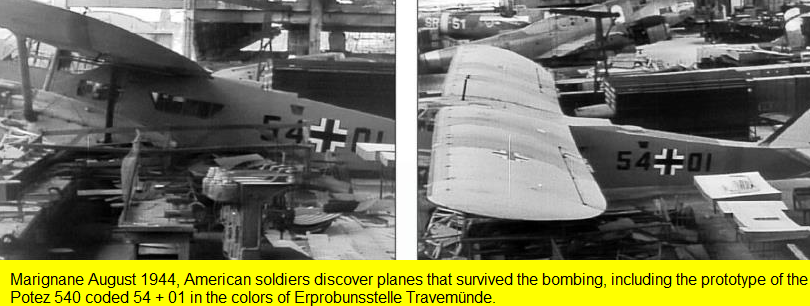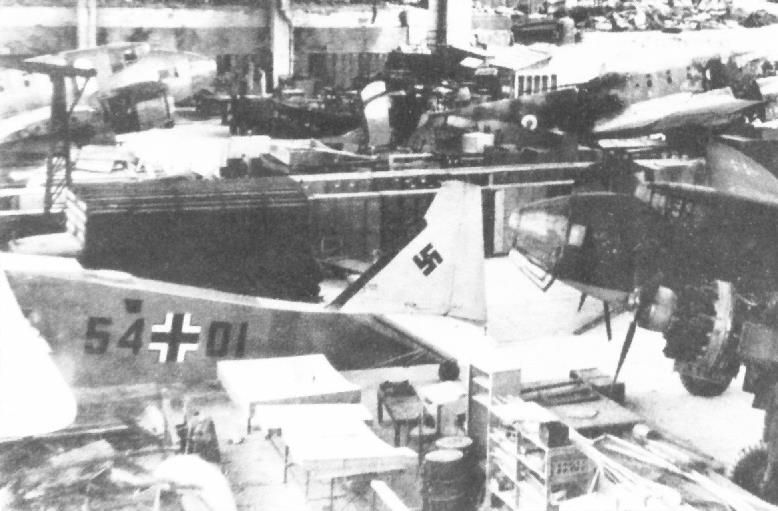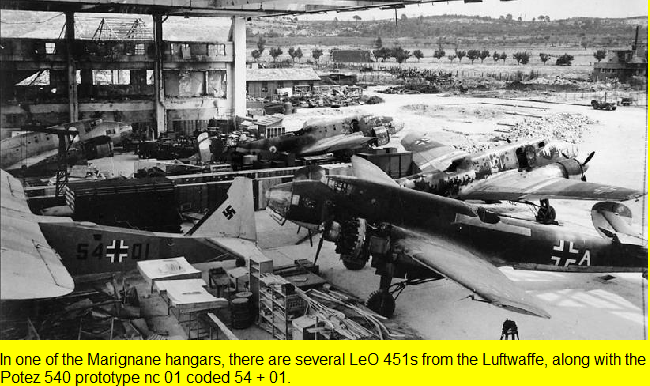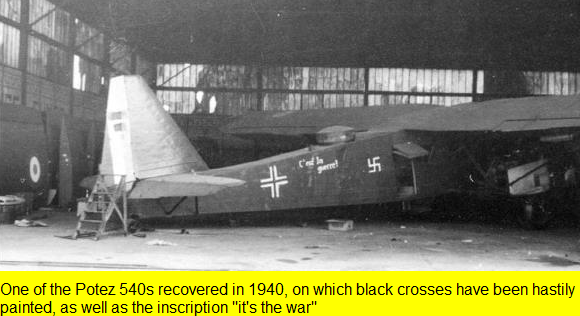This two-engine aircraft was built by the French Potez company to fulfill a 1932 specification for a new reconnaissance bomber. Built as a private venture, this aircraft, designated the Potez 54, flew for the first time on 14 November 1933. Designed by Louis Coroller, it was intended as a four-seat aircraft capable of performing duties such as bomber, transport and long-range reconnaissance. The Potez 54 was a high-wing monoplane, of mixed wood and metal covering over a steel tube frame. The prototype had twin fins and rudders, and was powered by two 515 kW (690 hp) Hispano-Suiza 12Xbrs V-12 engines in streamlined nacelles, which were connected to the fuselage by stub wings. The main landing gear units retracted into the nacelles, and auxiliary bomb racks were mounted beneath the stub wings. There were manually operated turrets at the nose and dorsal positions, as well as a semi-retractable dustbin-style ventral turret. During development, the original tailplane was replaced by a single fin and rudder, and in this form, the type was re-designated the Potez 540 and delivered to the Armee de I'Air on 25 November 1934. A total of 192 Potez 540s were built.
Their first combat was in the Spanish Civil War, where they were employed by the Spanish loyalist side. A poor design that was already obsolete just two years after its introduction, when confronted by the higher performance German and Italian planes of the same period, the Potez 540 proved itself a failure in Spanish skies during the Civil War and was labelled as 'Flying Coffin' (Spanish: Ataúd Volante) by Spanish Republican pilots.[2] In the late 1930s, these aircraft were becoming obsolete so they were withdrawn from reconnaissance and bombing duties and were relegated to French transport units. They were also employed as paratrooper training and transport aircraft. By September 1939 and the beginning of World War II, they had been largely transferred to the French colonies in North Africa, where they continued to function in transport and paratrooper service. Their role in even these secondary assignments was problematic given their poor defensive armament and vulnerability to modern enemy fighters. Following the French capitulation to Germany in June 1940, those Potez 540s still flying served the Vichy French Air Force mainly in the French overseas colonies. Most of these machines were retired or destroyed by late 1943.
| Type |
5 to 7 dependant on bomber or transport |
| Engine |
2 Hispano-Suiza 12Xirs |
| Dimensions |
Length 16,2 m , height 3,88 m , span 22,1 m , wing area 76,0 m2 , |
| Weights |
Empty 3785 kg, loaded , max. take off weight 5980 kg |
| Performance |
Max.. speed 310 km/h at 4000 m , cruising speed 260 km/h at 4000 m , range 1250 km, endurance , service ceiling 10000 m , climb to 4000 m 10 min. 30 sec. |
| Armament |
5 7.5 mm MAC 1934 machine guns in flexible nose, dorsal, and ventral positions
Bombs: 4 × 225 kg bombs on external racks or 10 × 55 kg |
| Type |
Werk.Nr |
Registration |
History |
|
|
54+01 |
A Potez 54 appears bearing German colors, coded 54 + 01, on a series of shots taken in Marignane. This aircraft was taken for evaluation to Erprobungsstelle Travemunde. |



